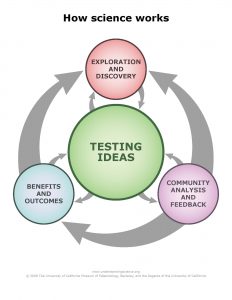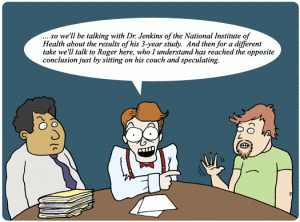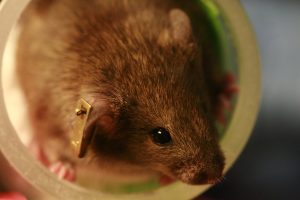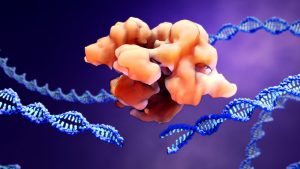2 Scientific Controversies
Andrea Bierema
Learning Objectives
- Define and identify “scientific controversies.”
- Describe confirmation bias.
- Given a description of an investigation, infer possible sources of confirmation bias and ways to mitigate those biases.
- Describe how diversity in the scientific community allows for growth in scientific knowledge.
- Distinguish between scientific hypotheses, theories, and laws.
- Determine if a science topic is a scientific controversy.
- Identify scientists who have made essential contributions to the body of biological knowledge that exists.
What is a Scientific Controversy?
The Merriam-Webster Dictionary defines controversy as “a discussion marked especially by the expression of opposing views.” So, what does it mean for something to be a “scientific” controversy?
So, what is a scientific controversy?
Exercise
The following activity is a series of scenarios. Determine if each one represents a scientific controversy or not. Each scenario is followed by which aspect of the science flowchart it represents. Below the interactive is a simplified flowchart (see the previous chapter for an in-depth version of the flowchart).

As you saw in the exercise above, controversies can take many forms, but many are not considered to be scientific controversies. For instance, ethical concerns are essential when society creates policy, but ethics do not use scientific evidence and so are not scientific controversies (reminder that science cannot answer all questions nor solve all of our problems).
Also, having unexpected results is very common in science, and the fact that things may turn out different than what you expected does not mean that it is a controversy. Even having a single published article contradicting a widely accepted concept does not result in controversy. However, once the scientific community continues to research the concept and is identifying mounting evidence that counters the accepted conclusion, then the concept may be a scientific controversy.
Also seen in the exercise, some ideas may appear to be controversial in science but really are not. This may happen unintentionally. For instance, balanced reporting is generally considered good journalism, and balance does have its virtues. The public should be able to get information on all sides of an issue, but that doesn’t mean that all sides of the issue deserve equal weight. Science works by carefully examining the evidence supporting different hypotheses and building on those that have the most support. Journalism and policies that falsely grant all viewpoints the same scientific legitimacy effectively undo one of the main aims of science: to weigh the evidence.

Confirmation Bias
In the last chapter, we were introduced to making inferences and how our prior knowledge can influence how we interpret data (or even which patterns we observe). Sometimes with scientific controversies, the evidence on one side is not particularly “strong,” but if the conclusion aligns with our prior knowledge, we may defend that conclusion until there is overwhelming evidence for the other side of the debate.
This is where confirmation bias comes into play. Confirmation bias allows us to quickly interpret our surroundings. This will either help or hinder us: from an evolutionary standpoint it is beneficial as it allows us to make quick decisions (e.g., “I just spotted something really big that might eat me- run!”), but it also affects our ability to “see” things that are in front of us. It also makes us feel we are right even when presented with information contradictory to our current understanding. This is partly why bias can be implicit- we do not always realize when we are biased.
This can be especially true when new viewpoints with some evidence do not coincide with existing theories. For example, a major argument against the theory of evolution when Darwin first proposed it was that the theory didn’t mesh with what was known about the age of the Earth at the time. Physicists had estimated the Earth to be just 100 million years old, a length of time that was deemed insufficient for evolution to account for the diversity of life on Earth today. However, as our understanding of geology and physics has improved, the age of the Earth has been more accurately pegged at several billion years old — a view that squares well with the idea that all life on Earth evolved from a common ancestor.
Exercise
How does prior knowledge influence our observations and inferences? Complete the following activity to find out!
Social Examples
Confirmation bias affects multiple aspects of our lives- not just how we interpret data. It also affects our immediate views of people (i.e., implicit stereotypes). What are your biases or implicit stereotypes? Project Implicit, a non-profit organization, developed the Implicit Association Test. One of the first steps to working to overcome our biases is to recognize what those biases are. Each test takes about 10 minutes. Take as many tests as you can!
See the Smithsonian’s online exhibit “Bias Lives Inside All of Us” for more information about bias, including its physiology and how it impacts the decisions that we make.
The following TEDTalk by Chimamanda Ngozi Adichie discusses stereotype thinking by discussing “the dangers of a single story. ”
Mitigating Bias
Although we cannot eliminate bias in our decision-making and research projects, there are ways to mitigate bias. One way is to scrutinize our methods before beginning the research and finding ways to reduce bias (see the exercise below for examples). The scientific community also aids in balancing biases.
The community evaluates evidence and ideas. Scientists describe their work at conferences, in journal articles, and in books. By disseminating their ideas, study methods, and test results in these ways, scientists allow other community members to review their work. This helps to ensure:
- that evidence meets high standards,
- that all relevant lines of evidence are explored,
- that judgments are not based on flawed reasoning, and hence,
- that science moves in the direction of more and more accurate explanations.

Moreover, the scientific community includes people from all over the world from all sorts of different cultures and backgrounds. Historically, western science has largely been the domain of white males. The scientific community has become more diverse, although it still underrepresents most marginalized groups (Fry, Kennedy, and Funk, 2021). Continuing to increase the community’s diversity improves science in multiple ways:
Examples
Chimpanzee Behavior
Before the 1970s, the field of primatology (the study of apes and monkeys) was dominated by men- even during the time that Jane Goodall studied chimpanzees. Male scientists observed and recorded primate behavior in the wild, male scientists developed explanations to understand those behaviors, and male scientists read and evaluated each others’ work. And at that time, observations suggested that primate social life was largely controlled by males, with females playing a more passive role. That is, western male scientists were biased by their own male-dominated society and took note of behaviors that matched what they knew. Any observations, such as females traveling away from the troop, were ignored- maybe not intentionally, but those behaviors were deemed as anomalies. 
But that changed when women scientists began to work in the field. Because of their own gender experiences, these women paid more attention to subtleties in the female primates’ behavior and revealed that female primates actually have elaborate sex lives and manipulate male behavior in many ways. So in this case, a diverse assemblage of scientists counterbalanced each others’ biases, leading to a more complete and accurate understanding of primate societies.
Hormones in Mice
 Not only does having a diverse research group help us counterbalance our biases but it can also influence the results of the study. Researchers studying how ketamine can act as an antidepressant in mice found that the results varied with which researchers were injecting ketamine into the mice. They discovered that it worked when male researchers gave ketamine but did not work for female researchers unless the mice were exposed to male scents. It turns out that the male scent triggered the release of another hormone, and that hormone was necessary for ketamine to work (original article: Georgiou et al., 2022; public media article: Williams, 2022).
Not only does having a diverse research group help us counterbalance our biases but it can also influence the results of the study. Researchers studying how ketamine can act as an antidepressant in mice found that the results varied with which researchers were injecting ketamine into the mice. They discovered that it worked when male researchers gave ketamine but did not work for female researchers unless the mice were exposed to male scents. It turns out that the male scent triggered the release of another hormone, and that hormone was necessary for ketamine to work (original article: Georgiou et al., 2022; public media article: Williams, 2022).
So science depends on diversity. If scientists were all the same, scientific controversies would be rare, but so would scientific progress! Despite their diversity, all of those individual scientists are part of the same scientific community and contribute to the scientific enterprise in valuable ways.
Exercise
Some things can be done during research projects that help mitigate researcher bias. This exercise provides some examples.
Theories, Hypotheses, and Laws
As explained in the previous section, our knowledge of currently accepted theories and laws can bias how we view the results of a study. But what are theories? To answer this question and better understand scientific controversies, it is essential to know the relationship between laws, theories, and hypotheses.
For an overview of the relationship between theories and laws, watch the following video:
Are laws regarding only things that are directly observed?
Some laws are non-mechanistic statements about the relationship between observable phenomena. For example, the ideal gas law describes how the pressure, volume, and temperature of a particular amount of gas are related to one another. It does not describe how gases must behave; we know that gases do not precisely conform to the ideal gas law.
Other laws deal with phenomena that are not directly observable. For example, the second law of thermodynamics deals with entropy, which is not directly observable in the same way that volume and pressure are. Still, other laws offer more mechanistic explanations of phenomena. For example, Mendel’s first law offers a model of how genes are distributed to gametes and offspring that helps us make predictions about the outcomes of genetic crosses.
The term “law” may be used to describe many different forms of scientific knowledge, and whether or not a particular idea is called a law has much to do with its discipline and the time period in which it was first developed. For example, several laws within biology are not referred to as “the law of […]” but are still observations of general phenomena.
Types of Controversies
Scientific controversies can occur regarding laws, theories, or hypotheses. Here are a couple of examples:
Fundamental scientific controversy: Scientists disagreeing about a central hypothesis or theory. If you imagine scientific knowledge as a web of interconnected ideas, theories and hypotheses are at the center of the web and are connected to many, many other ideas—so, a controversy over one of these principal ideas has the potential to shake up the state of scientific knowledge. For example, physicists are currently in disagreement over the basic validity of string theory, the set of key ideas that have been billed as the next big leap forward in theoretical physics. This is a fundamental scientific controversy.
Secondary scientific controversy: Scientists disagreeing about a less central aspect of a scientific idea. For example, evolutionary biologists have different views on the importance of punctuated equilibrium (a pattern of evolutionary change, characterized by rapid evolution interrupted by many years of constancy). This controversy focuses on an important aspect of the mode and rate of evolutionary change, but a change in scientists’ acceptance of punctuated equilibrium would not shake evolutionary biology to its core. Scientists on both sides of the punctuated equilibrium issue accept the same basic tenets of evolutionary theory.
Examples
Let’s look at some examples of science topics to determine if and to what extent they are scientific controversies.
Vaccines & Autism
This is a podcast version of the text in this section titled “Vaccines and Autism.” Feel free to listen to this podcast and/or follow along in the text.
Does vaccination cause autism, and is this a scientific controversy?
As emphasized by the World Health Organization and the Centers for Disease Control and Prevention, there is no evidence supporting that vaccination causes autism.
The idea of this possible link began by Wakefield and his research group when they published a paper in “The Lancet” journal in 1998 titled “Ileal-lymphoid-nodular hyperplasia, non-specific colitis, and pervasive developmental disorder in children” (see the original article, which has since been retracted). In the article, Wakefield et al. (1998) claimed that “In eight children, the onset of behavioural problems had been linked, either by the parents or by the child’s physician, with measles, mumps, and rubella vaccination.”

After years of investigation and additional research studies—all of which found no link between autism and vaccination (Eggertson, 2010)—the General Medical Council held a hearing in 2010. During this hearing, Wakefield “admitted and found proved” that the research was funded by Mr. Barr, who “had the benefit of public funding from the Legal Aid Board in relation to the pursuit of litigation against manufacturers of the MMR vaccine” (p. 4).
Additionally, the children in the study were not randomly selected for the study. Rather, according to the General Medical Council (2010), each child in the study was carefully selected after conversations with the children’s parents and doctors. For instance, the report described procedures for the selection of each child, and Child 3, for example, was referred by the child’s general practitioner for having “behavioural problems of an autistic nature, severe constipation and learning difficulties all associated by his parents with his MMR vaccination” (p. 18). “In reaching its decision, the Panel concluded that [Wakefield’s] description of the referral process as ‘routine’, when it was not, was irresponsible and misleading and contrary to [Wakefield’s] duty as a senior author” (p. 46).
The General Medical Council (2010) also found other irresponsible measures such as telling assistants to increase the amount of medication without reporting it to the doctor and taking blood samples from children at his son’s birthday party (documented on pages 50-56).
Wakefield and the so-called link between vaccination and autism are both discredited, and Wakefield is no longer a practicing physician. In 2016, Wakefield directed a propaganda movie called “Vaxxed: From Cover-Up to Catastrophe.” The movie was supposed to air at the Tribeca Film Festival but was pulled (Ryzik, 2016). Robert De Niro, one of the founders of the festival, originally supported the movie but later denounced it (Ryzik, 2016). Although, as of August 2021, a video clip of him supporting it is still on the Vaxxed website.
So, is this a scientific controversy? The Wakefield article caused scientists to investigate the potential for a relationship. But, no additional evidence was found showing a link between vaccination and autism, making the only “evidence collected” based on a retracted article written by a discredited physician. Therefore, the idea of any link between vaccines and autism is not a scientific controversy.
CRISPR
This is a podcast version of the text in this section titled “CRISPR.” Feel free to listen to this podcast and/or follow along in the text.
Genome editing technologies enable scientists to make changes to DNA, leading to changes in physical traits like eye color and disease risk. Scientists use different technologies to do this. These technologies act like scissors, cutting the DNA at a specific spot. Then scientists can remove, add, or replace the DNA where it was cut.
The first genome editing technologies were developed in the late 1900s. More recently, a new genome-editing tool called CRISPR, invented in 2009, has made it easier than ever to edit DNA. CRISPR is simpler, faster, cheaper, and more accurate than older genome editing methods. Many scientists who perform genome editing now use CRISPR.
One way that scientists use genome editing is to investigate different diseases that affect humans. They edit the genomes of animals, like mice and zebrafish, because animals have many of the same genes as humans. For example, mice and humans share about 85 percent of their genes! By changing a single gene or multiple genes in a mouse, scientists can observe how these changes affect the mouse’s health and predict how similar changes in human genomes might affect human health.
Scientists also are developing gene therapies—treatments involving genome editing—to prevent and treat diseases in humans. Genome editing tools have the potential to help treat diseases with a genomic basis, like cystic fibrosis and diabetes. There are two different categories of gene therapies: germline therapy and somatic therapy. Germline therapies change DNA in reproductive cells (like sperm and eggs). Changes to the DNA of reproductive cells are passed down from generation to generation. On the other hand, somatic therapies target non-reproductive cells, and changes made in these cells affect only the person who receives the gene therapy.

Even though CRISPR improved upon older genome editing technologies, it is not perfect. For example, sometimes genome editing tools cut in the wrong spot. Scientists are not yet sure how these errors might affect patients. Assessing the safety of gene therapies and improving genome editing technologies are critical steps to ensure that this technology is ready for use in patients.
There are also several ethical concerns that can emerge with genome editing, including safety. First and foremost, genome editing must be safe before it is used to treat patients. Some other ethical questions that scientists and society must consider are:
- Is it okay to use gene therapy on an embryo when it is impossible to get permission from the embryo for treatment? Is getting permission from the parents enough?
- What if gene therapies are too expensive and only wealthy people can access and afford them? That could worsen existing health inequalities between the rich and poor.
- Will some people use genome editing for traits not important for health, such as athletic ability or height? Is that okay?
- Should scientists ever be able to edit germline cells? Edits in the germline would be passed down through generations.
Most people agree that scientists should not edit the genomes of germline cells at this time because the scientific communities across the world are approaching germline therapy research with caution since edits to a germline cell would be passed down through generations. Many countries and organizations have strict regulations to prevent germline editing for this reason. The NIH, for example, does not fund research to edit human embryos.
There are many applications of CRISPR, including medical treatments (similar to gene therapy), agriculture (genetically modified organisms), and conservation (adding genetic diversity to species or de-extincting species—described in the next section). Many of these applications have non-CRISPR alternatives that have been around longer. For instance, scientists are researching how CRISPR can be used to treat cancers rather than chemotherapy. Given the novelty of CRISPR, its effectiveness and safety are continually studied and compared to traditional approaches. Depending on the findings of the research, some of these applications may be a scientific controversy and will take time to solve.
De-extinction
This is a podcast version of the text in this section titled “De-extinction.” Feel free to listen to this podcast and/or follow along in the text.
One of the more interesting conservation debates to have emerged in recent years involves efforts to reverse extinction. This field, known as de-extinction or resurrection biology aims to revive extinct species and eventually to reintroduce viable populations to their original locations (Seddon, 2017).
One possible method, called “breeding back”, aims to produce individuals genetically similar to an extinct species by selective breeding of extant species that carry the genetic material of their extinct relatives. This is the main method currently being used to revive the aurochs (Bos primigenius), the ancestor of today’s domestic cattle (Stokstad, 2015). Other “breeding back” projects place less emphasis on genetics and more on morphology, by selectively breeding individuals with certain traits to produce individuals that visually appear similar to the extinct species. Such is the case at The Quagga Project, where selectively breeding of plains zebras (Equus quagga) with quagga-like characteristics (reduced striping and brown hues) resulted in animals that look increasingly like extinct quaggas (Harley et al., 2009).
The second popular method used for de-extinction is cloning. This involves the transfer of viable genetic material from an extinct species to the eggs (or embryo) of a closely related surrogate mother, who will hopefully give birth to an individual of the extinct species. Cloning has been used in the selective breeding of livestock for many years, and plans are also currently underway to use cloning to prevent the extinction of highly threatened species such as the northern white rhinoceros.

Despite the promise that cloning offers for reviving extant and recently extinct species, cloning species that went extinct many years ago has been more challenging. So far, attempts to clone Spain’s Pyrenean ibex (Capra pyrenaica pyrenaica) and Australia’s gastric-brooding frog (Rheobatrachus silus) have produced individuals that lived for only a few minutes (Ogden, 2014).
Despite the progress made, de-extinction is one of the most controversial and polarising debates to emerge among conservation biologists in recent years. Proponents of de-extinction hope that the early work described above paves the way for the resurrection of extinct species once the threats that drove them to extinction have been managed. Many de-extinction biologists have even started establishing banks where the genetic material of threatened species is cryopreserved for future use.
Additional Examples
The following presentation contains additional examples of scientific controversies, including key scientists that were involved in the research.
References
Controversy. (n.d.). Merriam-Webster Online Dictionary. Retrieved from https://www.merriam-webster.com/dictionary/controversy
Eggertson L. (2010). Lancet retracts 12-year-old article linking autism to MMR vaccines. CMAJ: Canadian Medical Association journal = journal de l’Association medicale canadienne, 182(4), E199–E200. https://doi.org/10.1503/cmaj.109-3179
Fry, R., Kennedy, B., & Funk, C. (2021). STEM jobs see uneven progress in increasing gender, ethnic, and racial diversity. Retrieved from Pew Research Center https://www.pewresearch.org/science/2021/04/01/stem-jobs-see-uneven-progress-in-increasing-gender-racial-and-ethnic-diversity/
General Medical Council. (28 January 2010). Fitness to practice panel hearing. Retrieved from The NHS website for England https://www.nhs.uk/news/2010/01January/Documents/FACTS%20WWSM%20280110%20final%20complete%20corrected.pdf
Georgiou, P., Zanos, P., Mou, T.-C. M., An, X., Gerhard, D. M., Dryanovski, D. I., Potter, L. E., Highland, J. N., Jenne, C. E. et al. Gould, T. D. (2022). Experimenters’ sex modulates mouse behaviors and neural responses to ketamine via corticotropin releasing factor. Nature, 25, 1191-1200.
Harley, E.H., M.H. Knight, C. Lardner, et al. 2009. The Quagga project: Progress over 20 years of selective breeding. South African Journal of Wildlife Research 39: 155–63. https://doi.org/10.3957/056.039.0206
Ogden, L.E. 2014. Extinction is forever… or is it? BioScience 64: 469–75. https://doi.org/10.1093/biosci/biu063
Ryzik, M. (1 April 2016). Anti-vaccine film, pulled from Tribeca Film Festival, draws crowd at showing. The New York Times. https://www.nytimes.com/2016/04/02/nyregion/anti-vaccine-film-pulled-from-tribeca-film-festival-draws-crowd-at-showing.html
Seddon, P.J. 2017. The ecology of de-extinction. Functional Ecology 31: 992–95. https://doi.org/10.1111/1365-2435.12856
Stokstad, E. 2015. Bringing back the aurochs. Science 350: 1144–47. https://doi.org/10.1126/science.350.6265.1144
Wakefield A, Murch S, Anthony A; et al. (1998). Ileal-lymphoid-nodular hyperplasia, non-specific colitis, and pervasive developmental disorder in children. The Lancet. 351(9103): 637–41. doi:10.1016/S0140-6736(97)11096-0. PMID 9500320.
Williams, S. (8 Sept 2022). Sex of researcher influences ketamine’s effects in mice: Study. The Scientist. https://www.the-scientist.com/news-opinion/sex-of-researcher-influences-ketamine-s-effects-in-mice-study-70468
Attributions
This chapter is a modified derivative of the following articles:
“Extinction is Forever” by Wilson, J. W., & Primack, R. B., Conservation Biology in Sub-Saharan Africa, 2019, Cambridge, UK, Open Book Publishers, CC BY 3.0.
Understanding Science. 2020. University of California Museum of Paleontology. 11 June 2020 <http://www.understandingscience.org>.
“What is Genome Editing?” by National Human Genome Research Institute, National Institutes of Health, 2019, Policy Issues in Genomics, Public Domain.
Test results and/or observations that may either help support or help refute a scientific idea. In general, raw data are considered evidence only once they have been interpreted in a way that reflects on the accuracy of a scientific idea.
A precise gene editing technique. See the CRISPR chapter for more information.

